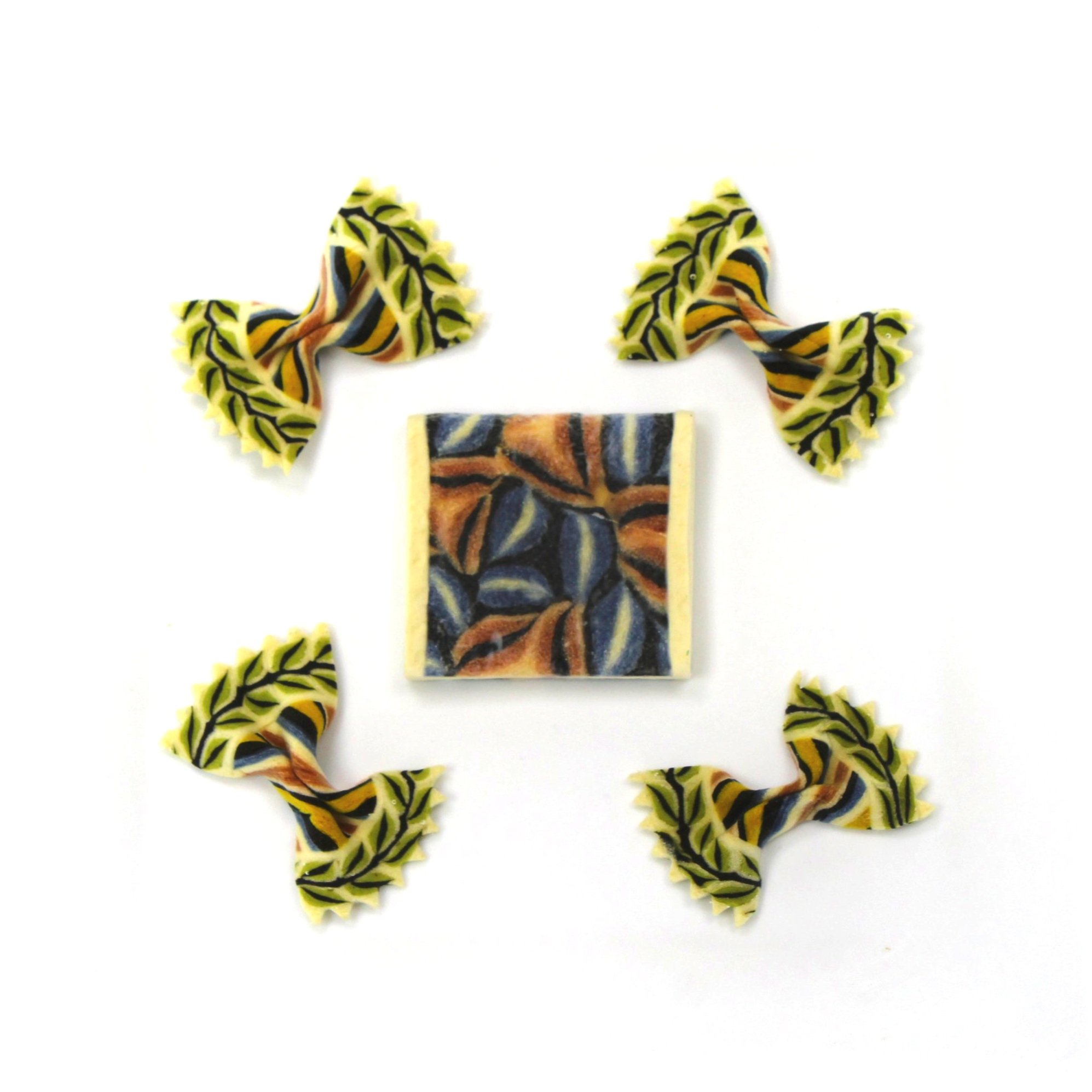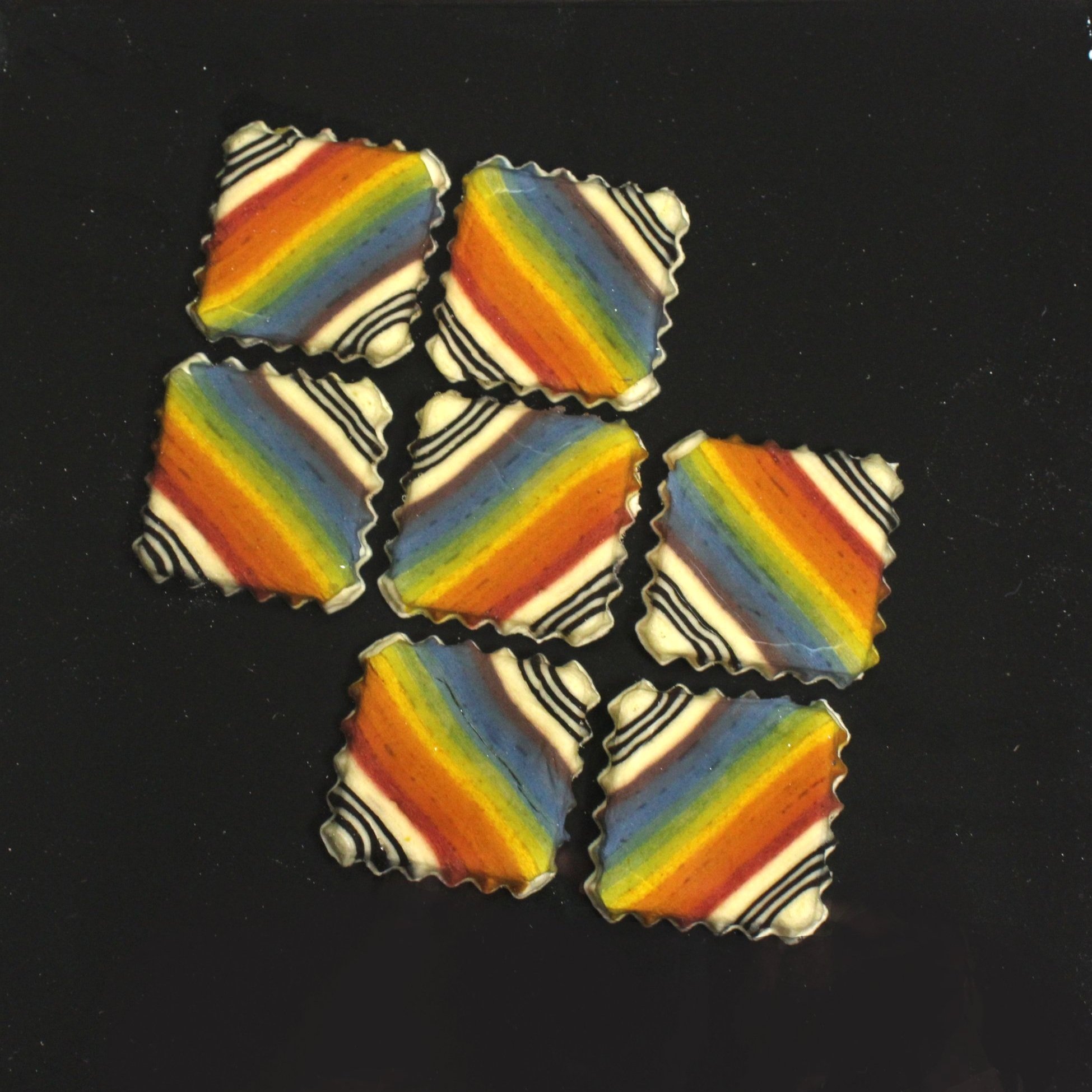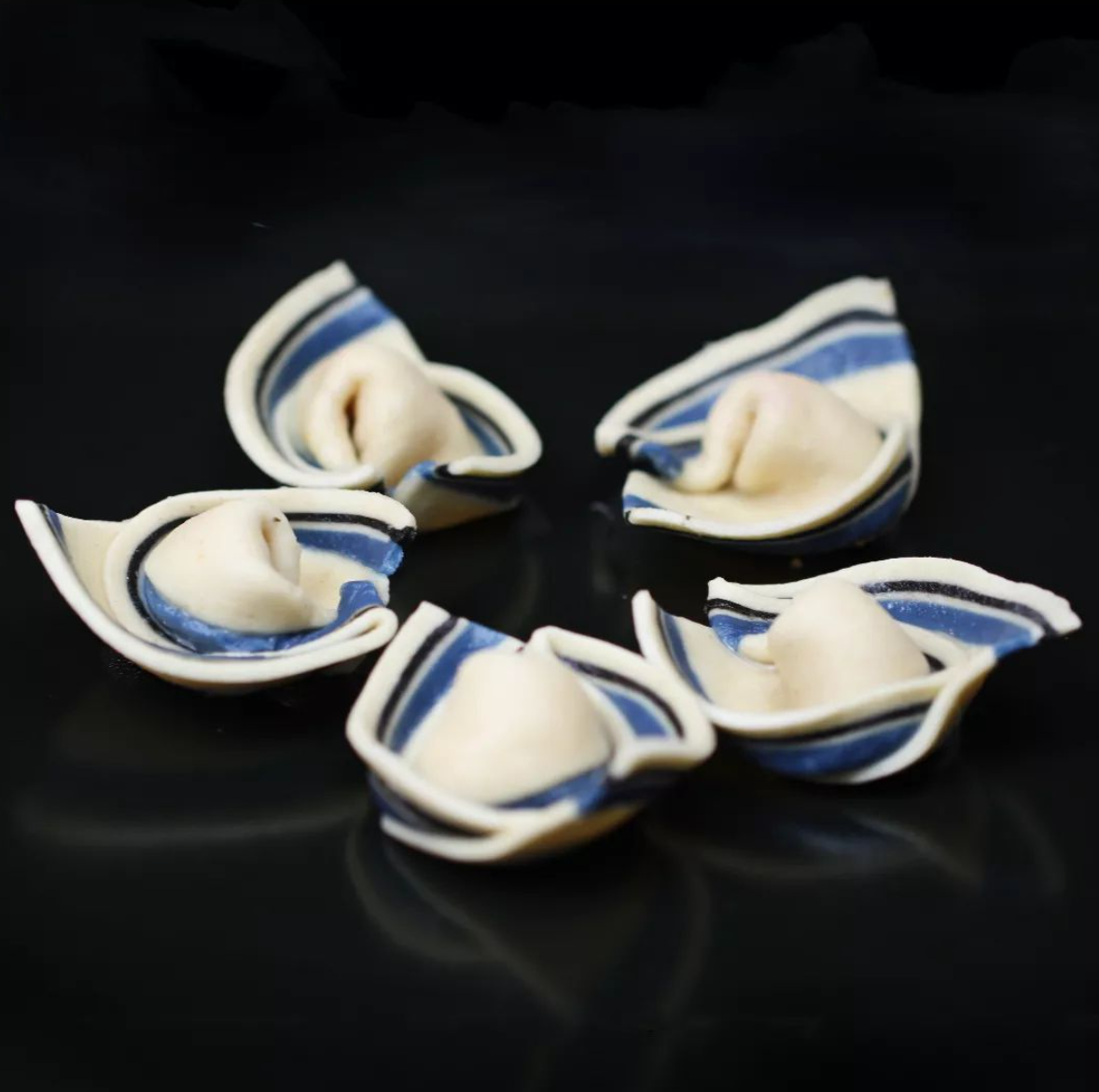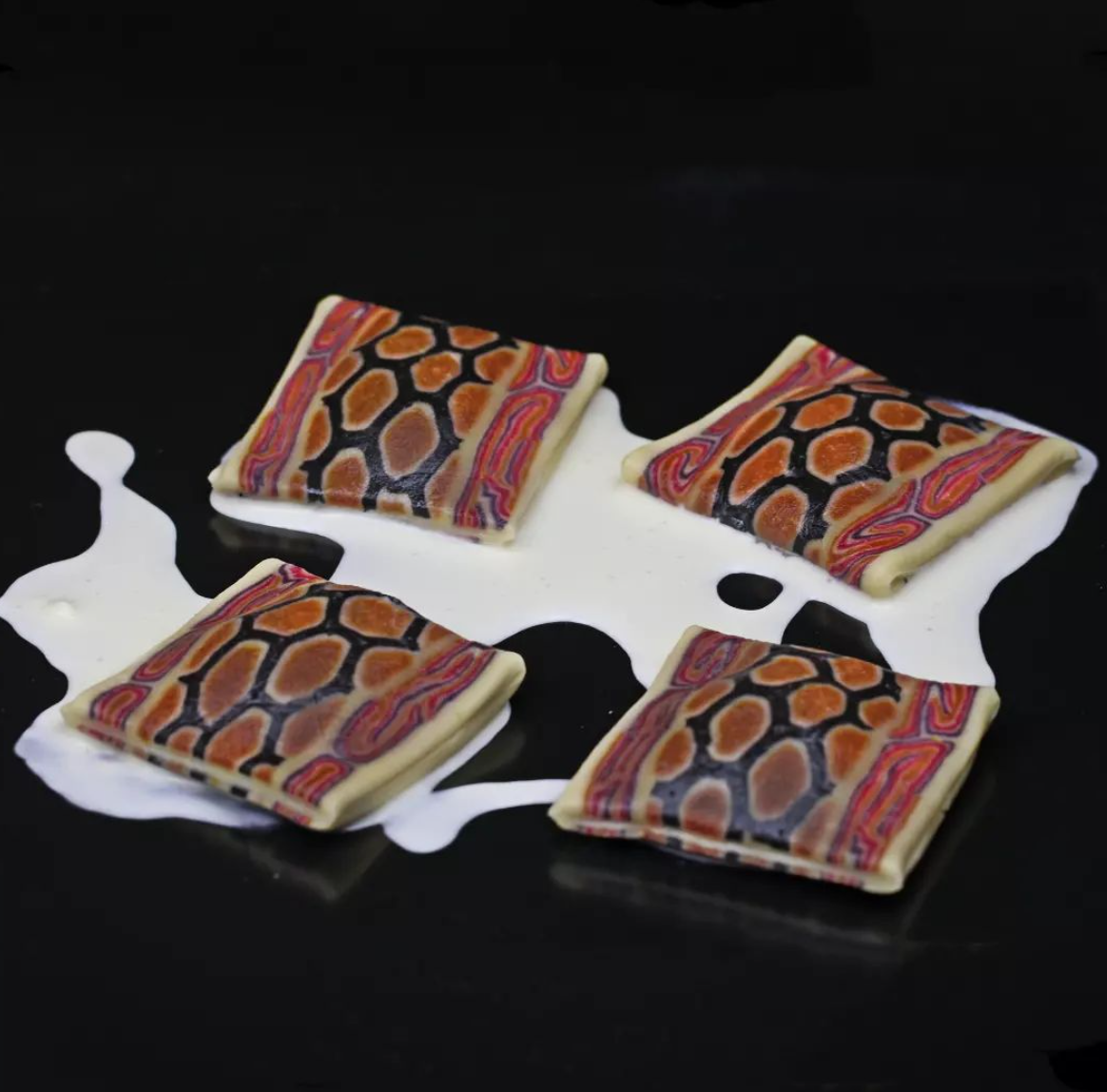Artist in conversation: Urs Bratschi
“The concept of "impossible" doesn't exist in my world”
Urs Bratschi is an artist who has found his canvas in the humble pasta. Embracing its versatility, Urs has transformed the way we perceive this simple dish, turning it into an exciting medium for artistic expression. His journey began with a pasta roller and a love for this staple food item, but quickly evolved into an explorative and meditative practice that pushes the boundaries of culinary and visual arts.
Urs sees pasta as a platform for creativity, not just in terms of flavor combinations, but also in its visual presentation. His first experiment with colored pasta, inspired by a work colleague's offhand comment about rainbow-colored pasta, opened up a world of possibilities. From there, Urs began to push the envelope, moving beyond just the rainbow to explore new ideas and techniques.
His unique pasta creations are more than just a feast for the taste buds; they are a visual treat that challenges our perceptions of what is considered art. Each piece is a testament to Urs' imaginative prowess and attention to detail, crafted with the same care and precision as a painter would apply to their canvas.
Beyond the aesthetic appeal, Urs' work is also a celebration of simplicity. He believes that a few good ingredients are all you need to create something truly remarkable, a philosophy that extends to his art. His pasta creations are a reminder that beauty can be found in the simplest of things, and that creativity knows no bounds.
Today, Urs Bratschi stands at the intersection of food and art, creating pasta masterpieces that are as delightful to look at as they are to eat. His work has redefined the realm of culinary art, proving that even the most ordinary ingredients can be transformed into extraordinary works of art with a dash of creativity and a pinch of passion.
What initially inspired you to become an artist, and how did you develop your unique style?
About 13 years ago, I purchased a pasta roller with the intention of creating my own pasta. I have a great love for both pasta and cooking. I began by coloring the pasta, starting with a single hue before advancing to multiple colors. This process of developing colored pasta was quite enjoyable for me. However, using just the rolling technique, I quickly realized that I was limited to creating only strips. So, I conceptualized a new technique: creating three-dimensional dough models and slicing them cross-sectionally with a food slicer. This method significantly broadened my possibilities. It was at this point that my friends started referring to my creations as art rather than food. I didn't initially set out with the intention of becoming an artist, but I unknowingly started creating art.
In terms of subject matter, what themes or motifs do you frequently explore in your work, and what draws you to these topics?
The concept of "impossible" doesn't exist in my world. "Impossible" is merely a barrier that one creates in their own mind. However, there are many design ideas for which I am still figuring out how to execute. That's why I love challenges and complex projects. I became fascinated by Greek ornaments (Meander), which led me to incorporate them into my pasta designs. This was not a trivial task! I spent several hours figuring out how to divide a meander into dough elements so that it would be precise enough and the effort would not be limitless. I became so engrossed in this meander that I suddenly saw the solution. Yet, achieving the necessary precision for the meander requires a delicate balance with the dough consistency. I'm also intrigued by images created from different pasta pieces, and I plan to focus more on that aspect.
Can you discuss a specific piece or project that challenged you as an artist, and how you overcome those challenges?
During a European Football Championship, someone dared me to create football-shaped ravioli. This turned out to be the biggest challenge I've faced in terms of shaping pasta: creating a ball without a visible seam, filled with ravioli filling. The project took several months, and every new idea I came up with didn't lead to my desired outcome. I was on the verge of abandoning the project. Then, a colleague who has celiac disease asked me to make gluten-free ravioli. Gluten-free dough can't be rolled because it crumbles entirely. Yet, I succeeded in making gluten-free ravioli. This gave me the solution for my football ravioli. Gluten-free dough can't be rolled but is perfect for modeling. I created a compact spherical core of cheese, modeled white gluten-free dough around it, placed some black pentagons, and thus, my football ravioli was born.
We are thrilled to connect with an artist who has taken a unique approach to their passion for cooking and turned it into an art form. Could you share more about the inspiration behind this technique and how it has expanded your design possibilities?
You can easily stick dough elements of a different color onto a sheet of dough to create pasta. This is a commonly used technique and is relatively simple. But it’s not that cool. I always had the idea of having just one layer of dough that contains the entire pattern. You quickly realize that this doesn't really work if you only think in two dimensions. So, the 3rd dimension is needed. The idea behind this is to build the entire pattern into a block of dough and use the food slicer to make wafer-thin cross-sections from which you finally build the pasta. With a bit of doubt if it would really work that well, I bought a food slicer. It worked much better than I thought.
I often explain this with a small dot. A small dot is difficult to build and position precisely. But if you add the 3rd dimension to this point, this point becomes a spaghetti. This can be easily created with the appropriate equipment and positioned precisely. This technology has massively expanded the possibilities. The next challenge arises from this: How do you get pasta dough into such shapes. Anyone who has ever made pasta knows that this dough is a stubborn lump and wants to stay a stubborn lump. So, the different patterns require very different techniques for working with the dough and creating the shapes.
We're curious to know more about the process of pouring the pasta in resin and the challenges you faced in getting the pasta completely dry before sealing it. Can you tell us about any significant milestones or breakthroughs you experienced during the two-year development of your manufacturing process?
When my friends told me that my pasta was art, I naturally had the idea of offering it in some form on the art market. Since there isn’t any market for edible art, I knew the pasta had to be preserved somehow. The idea of casting it in synthetic resin seemed like a good solution for me. But that's easier said than done. The pasta must be completely dry before pouring it in resin. If you try to dry pasta without any concept, it will crack and crumble. Flour can retain liquid very well, which affects drying times. The assembly concept for the pasta that I had at this phase resulted in a drying time of about 3 weeks. The pasta doesn't break apart until it's really dry. This requires endless patience - you only know after 3 weeks whether the procedure works. And it didn't work around 30 times. How the process of getting the pasta dry looks remains my secret. But I would like to reveal at least that the ingredients are not different from normal pasta dough. I use half spelled white flour, half durum wheat semolina, and eggs. This is also very important to me. There is real pasta in my artworks.
Casting it in synthetic resin was the next challenge. I initially wanted to have this done by an external company specializing in plastics processing, which offers services for casting things into resin. That was very expensive and didn't work. So, I finally took it into my own hands and as we can see, I did it.
How do you stay connected with other artists and keep up with new developments and trends in the art world?
The best way to connect with other artists is through exhibitions, both as an exhibitor and a visitor. I believe that exchange is very important. Other artists perceive art differently, much like other art enthusiasts. This can lead to new insights and inspirations.
How do you incorporate feedback from critics and audiences into your artistic practice, and how do you balance this feedback with your own artistic intuition?
This is a challenging question for any artist. However, I believe there is no absolute right or wrong. I don't just create a single piece of art that has to meet all criteria. I can do both - create artworks that embody my ideas and simultaneously create another piece that I assume aligns more with the taste of art consumers (as long as it also resonates with me in some way).
How do you stay motivated and inspired despite any setbacks or creative blocks you may encounter?
Nine years ago, I was diagnosed with Parkinson's disease. I can't separate my work as an artist from this disease; there is a connection. I think without this disease I would still make my own pasta, but probably not in the form of art. This diagnosis was a total catastrophe for me. I was completely desperate and felt incapable of doing anything. I even contemplated suicide. Ultimately, I realized that life goes on and can continue well. This diagnosis had a profound impact on me. It completely upended my worldview. I have learned a lot about myself and the world through this disease. Today, I know what I want and I'm going to pursue it. I won't just let it wait (as I often did in the past). I was also able to come to terms with this disease. It is now a part of me. Despite or perhaps because of this disease, I want to achieve something in my life and give it meaning. Every person can harness incredible energy. You just have to believe in yourself and truly desire something. All these insights that I have gained from this disease give me the energy to develop my pasta art. Maybe it's a bit crazy, but I want to conquer the art market with my pasta, and I now live my dreams even more intensely with Parkinson's!
How do you feel about exhibiting your artworks with The Holy Art Gallery?
I haven't known The Holy Art Gallery for long. I appreciate the variety of the exhibited art, which is also of a high standard. Communication with The Holy Art Gallery is effortless. It's enjoyable to exhibit art with them.
Looking ahead, what are your long-term goals and aspirations as an artist, and how do you plan to achieve them?
I want to bring my art into the world. My art is quite extraordinary and unique. This can be an advantage but also a disadvantage. I'm very excited to see what doors will open up for me. I don't have a concrete plan. Everything usually turns out differently than you thought. I am content with what I have achieved so far. We'll see where the journey leads. It's a grand adventure.






